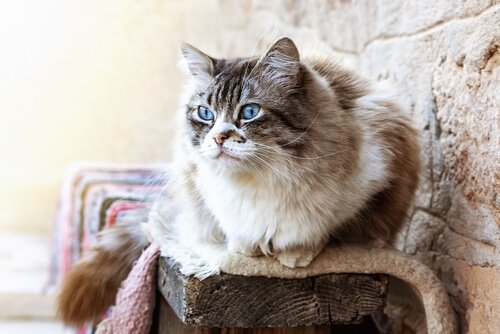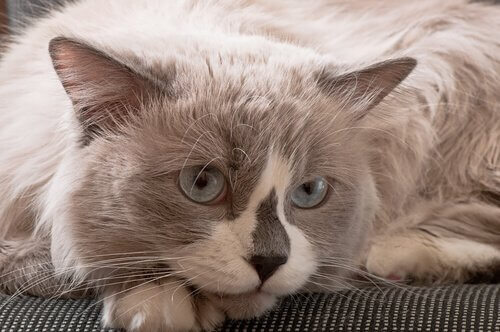The Ragdoll Cat: Is it More Like a Dog?

If someone asks us what words we associate with cats, the words that come to mind are apathetic, independent or mean. However, those who love cats would refute these descriptions. Today we’re going to tell you that there does exist a very odd feline, that they say is a dog-like cat. We’re referring to the ragdoll cat.
Why do they call this cat dog-like? Well, it’s because its personality is more like a dog than a cat. We’re going to look closely at this animal. And who knows? Maybe you’ll even decide that you want one yourself.
How is the ragdoll different from other cats?
For starters, they are different from other cats because they are very dependent, like dogs. These cats won’t leave your side or look through you when you call them. They’ll always respond to your call and seek out your attention and your affection. They’ll also give you their love.

The ragdoll cat is ideal for children, for other cats, for dogs, and for any other animal you can think of. Like a dog, a ragdoll will greet you when you come through the door.
She’ll always want to be sitting on you, and if you forget to give her attention, she’ll follow you around crying wherever you go. In other words, she’s an excellent emotional blackmailer.
She’s a great host when you have guests. In her quest for pampering, she’ll follow people around. Extra petting is never too much.
Like a good “doggy cat” she’ll fetch objects that you throw for her. If you like family activities, she’ll come running to you when she sees you smiling and having a good time.
She’s also a member of the family and she loves to play. Last but not least, she has superior intelligence to other cats. Therefore, you won’t see her inside any type of container that she can’t get out of. This just won’t happen to a ragdoll cat.
The ragdoll cat characteristics
History and origin
This cat is a mixture of many feline breeds. The original breeds aren’t very well known since it was the result of an experiment carried out by a breeder named Ann Baker.
She had a white kitten and one day she decided that she wanted a particular type of cat. We might say that in her mind she has designed her own special cat. So, without wasting any time, she started to cross breed her cat with different species and finally came up with the ragdoll cat.
Later, the ragdoll cat was recognized as a breed.
Physical characteristics of the ragdoll cat
The ragdoll has soft fur that is medium long. Its tail is fluffy with thick fur, like that of a Persian cat. Could it be a Persian cat that was used in the Ann experiment? In order to take good care of the tail, the owner needs to brush it at least three times a week.
These cats may come in various colors, even though their tail and feet will always be darker than the rest of their body.
Their bodies are robust and strong, and at the same time long. It’s unusual to find an obese ragdoll.
Ragdolls have a wide head in the shape of a triangle and have beautiful blue eyes. In fact, they always have blue eyes, but in different tones.
Oddities about the ragdoll

The name of this feline is very curious. It has this name for two reasons. The first is, that when born, they appear to have no body mass, just inactive muscles. The second is because they seem to be dead when they are asleep.
Ragdolls almost never meow because their voice isn’t very strong and they prefer to save it up to let humans know when it’s time to eat. Then they make soft noises.
Heights are not popular among ragdolls. This is because they like attention and prefer to lounge on a sofa in case someone is willing to pet them.
Therapists use these cats in sessions, especially with older individuals. Their sweetness and affection make people feel loved and needed, which improves their emotional state and self-esteem.
Is it a cat? Is it a dog? No, it’s a ragdoll!